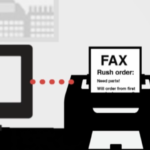Road trips are one of America’s favorite methods of travel. In fact, about 79 percent of vacationers choose to travel by car over any other mode of transportation. It’s true that road trips tend to be more of a summer adventure, but that doesn’t mean you can’t go during the winter – whether you’re traveling for the holidays, or you simply want to enjoy the winter scenery and recreation.
Although there are no rules saying you can’t take a road trip during the winter, recognize that there are often more safety concerns when it’s cold outside. Depending on where you’re going, there’s a higher risk of snow, wind, and ice.
Cars may be the most popular way to travel, largely because of their convenience and affordability, but they are also the most dangerous. Motor vehicles boast more deaths and injuries per year than any other form of transportation. Even if you’re the most careful driver in the world, you can still find yourself in an accident caused by someone else.
For that reason, take specific safety precautions when preparing for your travels. Before embarking on your winter road trip, consider the following safety recommendations.
1. Get Your Vehicle in Shape
The last thing you need on a cold winter road trip is for your car to die. You’ll want to check:
- Lights
- Wipers
- Brakes
- Tires
- Fluids
- Oil
- Battery
Your mechanic might also recommend a few other essential maintenance items before you head out. Most importantly, you need good tires that can handle snow and ice.
2. Check Local Weather Reports
It’s never wise to take a winter road trip if you anticipate bad road conditions. If there’s a chance of blizzard, high winds, or an ice storm, consider delaying your trip. Even waiting just a few hours to leave so that the snow plows have a chance to hit the streets can significantly improve your chances of safe driving.
3. Brush Up on Safe Winter Driving Skills
If you think back to your driver’s education course, you’ll remember learning about handling a vehicle on snow and ice. But unless you practice on a regular basis, you probably don’t remember how to react when you hit black ice or how to avoid sliding when stopping.
Research practical driving tips for winter weather. YouTube videos can be extremely useful in preparing you for winter driving.
4. Drive Defensively
There’s no place for aggressive driving in winter weather conditions. Take certain precautions and be aware of other drivers on the road. The most important thing is to slow down. Here are other tips for driving defensively:
- Don’t drive the speed limit unless roads are perfectly clear (drive slower).
- Give yourself plenty of time to brake.
- Put at least three cars worth of space between you and the person in front of you.
- Don’t pass slow-moving cars too quickly – they’re probably driving slowly for a reason.
- Stop completely at stop signs and make sure other cars are able to come to a complete stop before entering the intersection.
5. Pack an Emergency Kit
In case you find yourself stranded, stuck, or otherwise in danger during your trip, there are a few essentials you’ll want to have with you:
- Coats and blankets for warmth
- First-aid kit with manual
- Booster cables
- Tow straps
- Flashlight
- Air compressor
- Sand or kitty litter (in case you need traction)
- Shovel
- Tire chains (for mountain roads)
- Cell phone charger and portable battery
- Cell phone booster
- Winter footwear
- Medications
- Non-perishable food
- Water
You can often purchase a full winter-emergency kit on Amazon or at an outdoor recreation center if you don’t want to put everything together yourself.
6. Bring a Battery Charger
Cold weather can cause your battery to die suddenly, even if all the lights were off in your car. In case there’s no one around to jump your car if your battery dies, have a portable battery charger in your trunk to avoid calling an expensive tow truck.
7. Schedule Driving Time Around Traffic
Accidents during any time of the year are more likely to happen during high traffic periods. When the road conditions are less than favorable, high-traffic roadways become even more dangerous. Try to schedule your travel time during periods of milder traffic. Usually, traffic is worst around large cities between 7 and 10 a.m. and 3 and 6 p.m.
Your winter vacation will be a blast if you take these winter driving precautions. Nothing ruins a great trip faster than an accident, and you can significantly reduce those chances by being prepared.








